My Facial Feminisation Thesis
Part 5:
Relative Proportions
I have defined and named 5 rules of proportion that help to identify some of the key relationships between different features and areas of male and female faces. These rules highlight some interesting differences between the male and female prototypes but it is important to understand that they cannot necessarily be applied to every real-life face for FFS purposes – they are more a set of guidelines that can sometimes help highlight problem areas.
1. The Box Rule:
If you draw a perfect square on an averaged female face with the top of the square running along the top edge of the eyebrows and the 2 sides touching the widest part of the cheeks, you will find that the chin touches the bottom of the square fitting the face fairly neatly into a perfect box. If you apply the box to an averaged male face in the same way, his chin will extend a little way below the bottom. So a while a female face tends to fit into a square, a male face tends to fit into a rectangle. You will see from the illustration below that the rule is not absolutely exact but it is close.
The box rule is very important and I tend to find that when a face fits the Bronochi Rule for women (see below) and yet still looks somehow masculine, this is often because the face is in the male ranges for the box rule. In other words the Box Rule is often more important for facial gender recognition than the Bronochi Rule.
However, the jaw and chin are intimately linked – if your shorten the chin you make the jaw look wider and vice versa so if someone has a wide jaw (even after FFS) then it may be best to leave a little height in the chin to balance it even if this leaves the chin extending below the box. The height of the chin must also balance with the lip to nose distance (see the "Nolichi rule" below). All these things must be weighed and balanced together when deciding how best to proceed with a face.
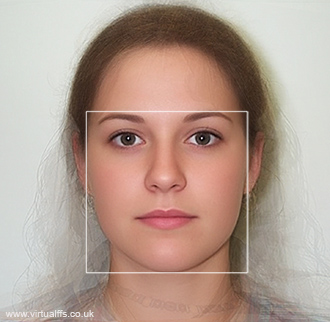
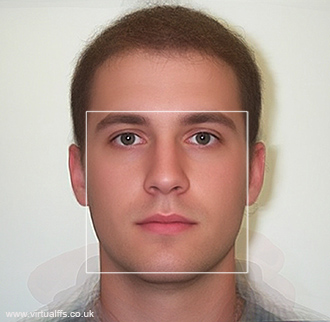
The Box Rule
2. The Bronochi Rule:
On an averaged female face, the distance between the top of the eyebrows and the base of the nose is about the same or very slightly more than the distance between the base of the nose and the base of the chin. While on a male face, the distance between the top of the eyebrows and the base of the nose is somewhat less than the distance between the base of the nose and the base of the chin.
However, chin shape is much more important than the height. This is partly because a square chin has a flat base and this flat base clearly underlines the height of the chin as if someone had etched a flat pencil line there while a rounded shape gives a much more vague sense of height. Another reason is that rounding a chin by shaving off the corners does actually reduce the height of either side of the chin – only the central point is left at the same height as before so more of the chin is shortened than is left at the same height.
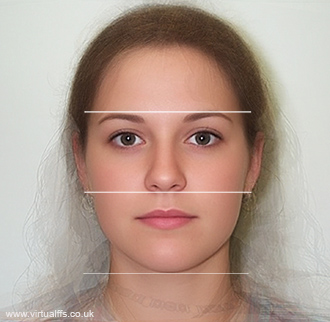
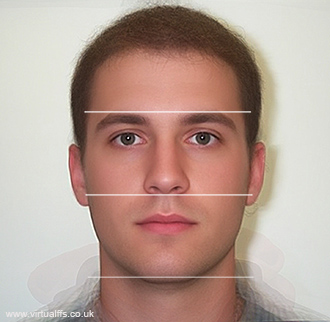
The Bronochi Rule
3. The Nolichi Rule:
On both male and female faces, the distance between the base of the nose and the opening of the mouth is just slightly less than one third of the distance between the base of the nose and the base of the chin. The nolichi rule is very useful in FFS because it helps you define a natural balance between mouth and chin. These features are intimately linked and adjusting one, changes your perception of the other so basically, if you shorten a chin, you make the lip to nose distance seem longer by comparison and conversely, if you shorten the lip to nose distance with a lip lift, you make the the chin look proportionately taller. Leonardo Da Vinci used a similar rule for this area but he skewed faces to fit exactly on equidistant lines. As you can see, in reality, nature is a little more vague.
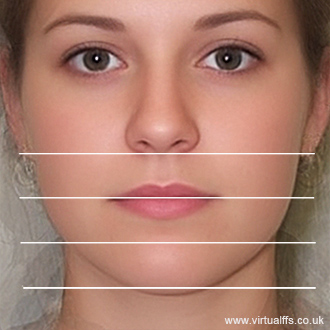
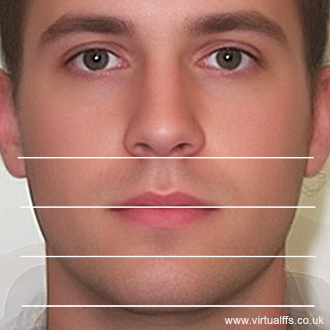
The Nolichi Rule
4. The Lipuhai Rule:
If you draw a horizontal line at the opening
of the mouth, then draw another horizontal line through the centre of the
pupils. The distance between the mouth line and pupil line will be about the
same as the distance between the pupil line and the hairline on a male but
somewhat less than the distance between the pupil line and the hairline on a
female. The Lipuhai rule shows that it is not always a good idea to bring
the hairline forwards on a trans woman. Again, it should be applied with caution to a real life face and is more often a reason to leave the hairline where it is than to bring it forwards. I generally find that if the hair is in the male position, it is generally OK but it is best not to bring it forwards of the average male position into a extreme male position as does sometimes happen in FFS.
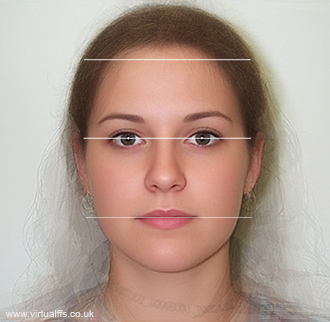
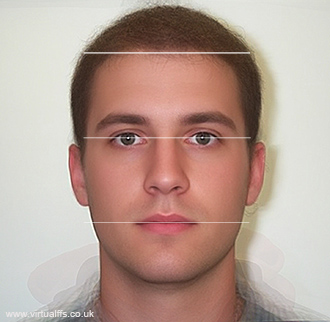
The Lipuhai Rule
5. The Big Picture Rule:
It can be a problem for FFS patients and surgeons when they look at a face as a collection of little details rather than also taking in the big picture. In the case of patients, this can lead to them becoming quite obsessed with the masculinity of one feature when in fact, their overall look is both attractive and feminine. In surgeons, this can lead to them recommending the feminisation of a feature because it can be done rather than because it needs to be done.
Please use the links below to navigate around the thesis:
Part 2: The Established Research
Part 4: Sexual Dimorphism of the Face Feature by Feature
Part 6: Female Neoteny and Feminisation as a Subtractive Process
Part 7: Objective and Subjective Femininity
Part 8: How Feminine is Feminine Enough?
Part 10: The Man in the Mirror/Self Perception